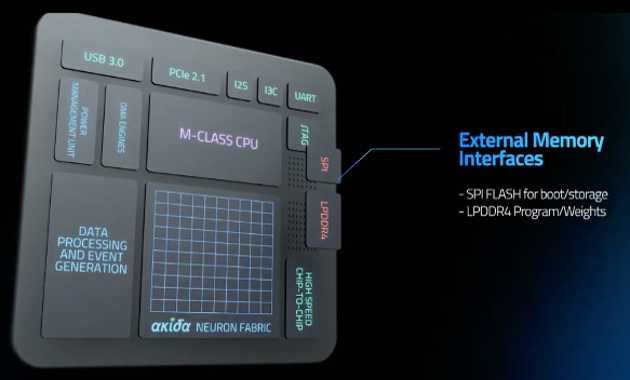wilzy123
Founding Member
Oh well just means I can buy more for a cheaper price
I personally just took advantage of this.
Oh well just means I can buy more for a cheaper price
Hi Macca,Another interesting dot to dot.
Further to the job add for IMEC
I think this is significant. Also didn't RobT talk about a telecommunications company (Nippon Telegraph and Telephone Corp.)
"A newly founded Japanese semiconductor company aiming to revive Japan's chip industry signed an agreement on Tuesday to collaborate with a Belgian research organization in developing next-generation chips for production in Japan." (aka IMEC)
"Economy and Industry Minister Yasutoshi Nishimura told reporters that the new company, Rapidus, which was launched last month by eight Japanese corporate giants including automakers, electronics and chip manufacturers, is teaming up with Imec, a Leuven, Belgium-based research organization known for nanoelectronics and digital technologies key to developing next-generation chips."
"Its members include automaker Toyota Motor Corp., electronics makers Sony Group Corp. and NEC Corp., SoftBank Corp., Nippon Telegraph and Telephone Corp. and computer memory maker Kioxia."
"Rapidus plans to send engineers to Imec and forge ties with other research labs and companies outside Japan."
2022-12-japan-belgium-cooperate-chip-production.html
Podcast out
Hi Pmel,What is going on. Why is this sudden drop.
How can a product that has been linked to some of the biggest names continuing going south, ,good luck to the CEO nxt agm if the shareprice is doing nothingWhat is going on. Why is this sudden drop.
Thanks Dio.Hi Macca,
It is significant, but it is not Akida.
IMEC is analog NNs.
EP3674982A1 HARDWARE ACCELERATOR ARCHITECTURE FOR CONVOLUTIONAL NEURAL NETWORK
EP3671750A1 SYNAPSE CIRCUIT WITH MEMORY
EP3671568A1 BINARY RECURRENT NEURAL NETWORK INFERENCE TECHNIQUE
EP3671748A1 IN-MEMORY COMPUTING FOR MACHINE LEARNING
US2020210822A1 Multibit Neural Network
US2020151550A1 Machine Learning Accelerator
US2020159809A1 Convolution Engine for Neural Networks
|
Lucky you, I have to wait till Tuesday!I personally just took advantage of this.
same hereI personally just took advantage of this.
MaccaThanks Dio.
Although disappointing, you are one clever dude, and a big assets to this group.
Just goes to show how much I don't know, ha
cheers again, back to my corner.
Cheers.In every presentation on this issue it has never been suggested that the design would need to be changed to take AKIDA smaller than 28nm.
A quick Google brought up this paper which appears to support the proposition that Scratch pad memory can at least move down to 7nm:
“A 7-nm Compute-in-Memory SRAM Macro Supporting Multi-Bit Input, Weight and Output and Achieving 351 TOPS/W and 372.4 GOPS
Publisher: IEEE
Cite This
Mahmut E. Sinangil; Burak Erbagci; Rawan Naous; Kerem Akarvardar; Dar Sun; Win-San Khwa; Hung-Jen Liao; Yih Wang; Jonathan Chang
Sign In or Purchase
30
Paper
Citations
4250
Full
Text Views
Abstract
Authors
Figures
References
Citations
Keywords
Metrics
More Like This
Footnotes
- Download PDF
- View References
- Request Permissions
- Save to
- Alerts
Abstract:In this work, we present a compute-in-memory (CIM) macro built around a standard two-port compiler macro using foundry 8T bit-cell in 7-nm FinFET technology. The proposed design supports 1024 4 b $\times $ 4 b multiply-and-accumulate (MAC) computations simultaneously. The 4-bit input is represented by the number of read word-line (RWL) pulses, while the 4-bit weight is realized by charge sharing among binary-weighted computation caps. Each unit of computation cap is formed by the inherent cap of the sense amplifier (SA) inside the 4-bit Flash ADC, which saves area and minimizes kick-back effect. Access time is 5.5 ns with 0.8-V power supply at room temperature. The proposed design achieves energy efficiency of 351 TOPS/W and throughput of 372.4 GOPS. Implications of our design from neural network implementation and accuracy perspectives are also discussed”
I chose to Google 7nm as the former CEO Mr. Dinardo when asked by a shareholder in one of his webinars for the first time that I am aware said “Yes it can scale down from 28 to 14 to 7nm”. Since then Anil Mankar and Peter van der Made have also mentioned 4nm and 5nm respectively.
The intriguing part of Numen referencing 22nm apart from this is that Anil Mankar said in the Anastasia video that NASA was looking at 90nm. At 90nm semiconductors are more resilient to radiation and as I understand it semiconductors used in defence applications also seek similar resilience.
All I have at this stage.
My opinion only DYOR
FF
AKIDA BALLISTA

Yep some awesome research, time and knowledge shared generously here @tse... Also a big shout out to you @Earlyrelease & Tony Dawe for your great efforts as ourMacca
Concur with your comment re Dodgy knees. He is an asset to this group as are a number of great informative posters so thanks too
IMEC are still in prototype stage of their Capacitive FeRAM, so I would guess it will be a few years before they are production-ready. After all, they probably have not experienced the immediate commercial urgency of manufacturers - IMEC = Interuniversity Microelectronics Centre (IMEC) .Hi Macca,
It is significant, but it is not Akida.
IMEC is analog NNs.
EP3674982A1 HARDWARE ACCELERATOR ARCHITECTURE FOR CONVOLUTIONAL NEURAL NETWORK
EP3671750A1 SYNAPSE CIRCUIT WITH MEMORY
EP3671568A1 BINARY RECURRENT NEURAL NETWORK INFERENCE TECHNIQUE
EP3671748A1 IN-MEMORY COMPUTING FOR MACHINE LEARNING
US2020210822A1 Multibit Neural Network
US2020151550A1 Machine Learning Accelerator
US2020159809A1 Convolution Engine for Neural Networks
Different strategies, different goals and different outcomes.WBT up 2% today and up 50% over the past 6 months. Why? Loads of great news and the CEO recently held a "Meet and greet event" with the shareholders where he disclosed that they were confident in signing with a Tier 1 fab prior to Christmas.
BRN - hold a meeting and release some of your secrets
